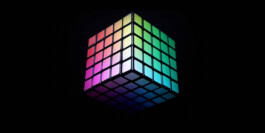
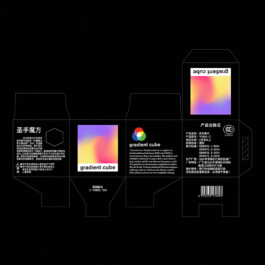
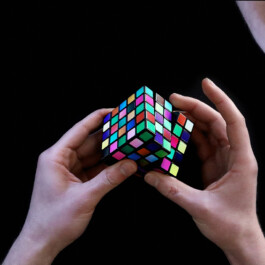
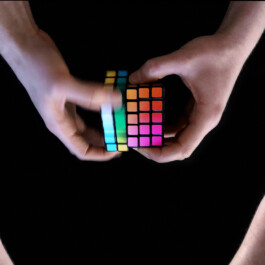
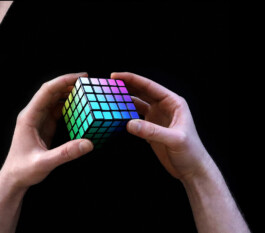
The Gradient Cube
object
2020
Using a cubic model, it's possible to represent the traditional color spaces RGB and CMYK in a linear environment. The additive and subtractive color worlds create a gradient, leading to 283 duodecillion combinations across 98 rotatable elements. The resulting orientation not only complicates the process but also leads to only one possible solution.
The conventional Rubik's Cube by Ernő Rubik is a globally recognized puzzle, acclaimed for its design, complexity, and mechanics, winning several awards. Once mastered, one seeks greater challenges. The Gradient Cube adds another design aspect, providing a creative tool to compare colors and discover color combinations. Or, when solved, it simply looks incredibly appealing on the desk.





The Gradient Cube
object
2020
Using a cubic model, it's possible to represent the traditional color spaces RGB and CMYK in a linear environment. The additive and subtractive color worlds create a gradient, leading to 283 duodecillion combinations across 98 rotatable elements. The resulting orientation not only complicates the process but also leads to only one possible solution.
The conventional Rubik's Cube by Ernő Rubik is a globally recognized puzzle, acclaimed for its design, complexity, and mechanics, winning several awards. Once mastered, one seeks greater challenges. The Gradient Cube adds another design aspect, providing a creative tool to compare colors and discover color combinations. Or, when solved, it simply looks incredibly appealing on the desk.